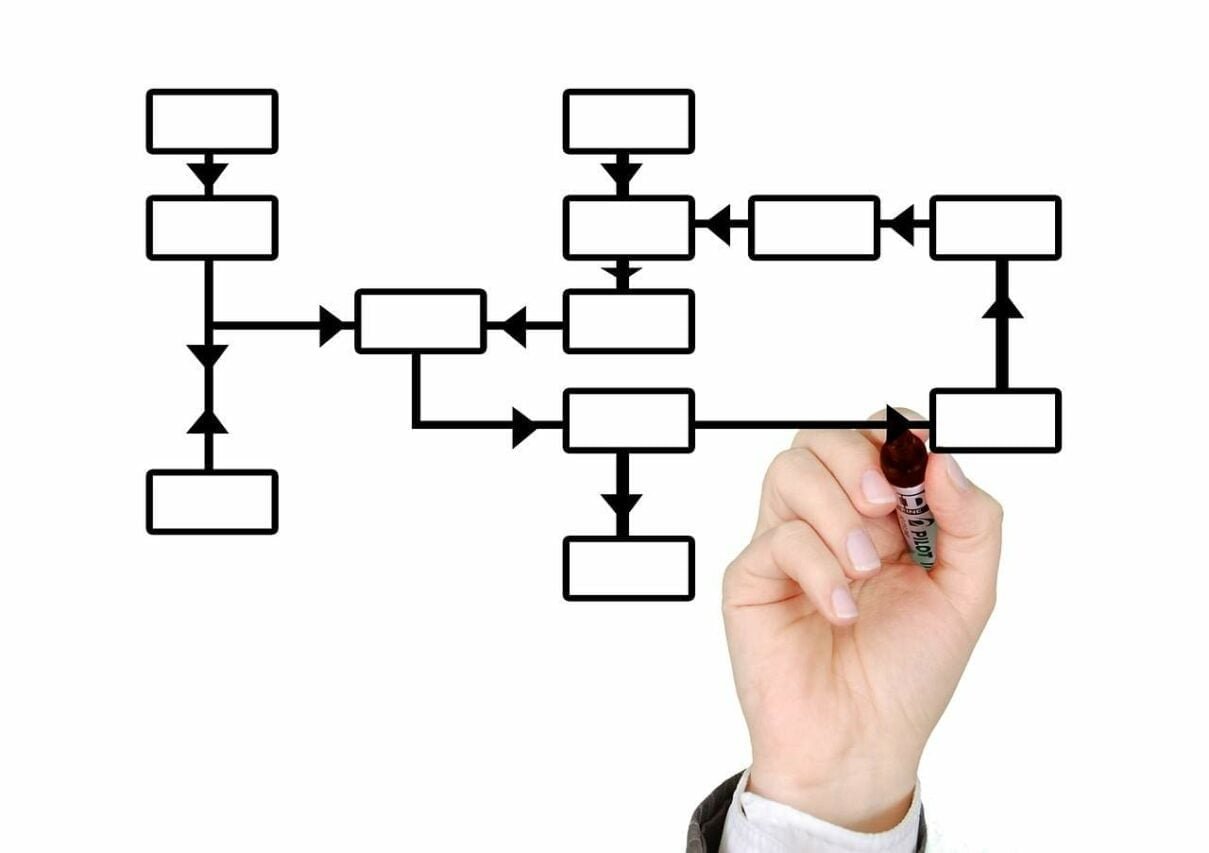The meaning of management accounting is Presentation of accounting information is to assist in the management of management accounting policy creation and to help in the day-to-day operation of an undertaking. Management Accounting of Functions, Advantages, and Limitations. Thus, it is related to the use of aggregated accounting data with the help of financial accounting and cost accounting with the objective of planning, planning, controlling and decision making by the management. Management accounting link management with accounting is the subject of management accounting as any accounting information required to make managerial decisions. In the Hindi language: प्रबंधन लेखांकन का कार्य, लाभ, और सीमाएं।
Better Explanation of Management Accounting of Functions, Advantages, and Limitations. With Meaning and Definition.
Management Accountancy is a composite mix together in all aspects of complete, financial accounting, cost accountancy, and financial management. This crystal becomes clear that management presents accounting management accounting information in the form of processed data collected from financial accounting, cost accounting so that it can be very useful in the management part to make appropriate decisions in management, Scientific methods, when necessary.
Meaning of Management Accounting:
Management Accounting is the presentation of accounting information in order to formulate the policies to be adopted by the management and assist its day-to-day activities. In other words, it helps the management to perform all its functions including planning, organizing, staffing, directing and controlling.
Definitions of Management Accounting:
In the words of J. Batty:
“Management Accountancy is the term used to describe the accounting methods, systems, and techniques which, with special knowledge and ability, assist management in its task of maximizing profit or minimizing losses.”
According to R. N. Anthony:
“Management Accounting is concerned with accounting information that is useful to management.”
According to ICWA of India:
“Management accounting is a system of collection and presentation of relevant economic information relating to an enterprise for planning, controlling and decision-making.”
According to CIMA London:
“Management accounting is the provision of information required by management for such purposes as the formulation of policies, planning and controlling the activities of the enterprise, decision-making on the alternative courses of action, disclosure to those external to the entity (shareholders and others), disclosure to employees and safeguarding of assets.”
According to the American Accounting Association:
Management Accounting is “The application of appropriate techniques and concepts in processing historical and projected economic data of an entity to assist management in establishing plans for reasonable economic objectives and in the making of rational decisions with a view towards these objectives”.
From the above it is clear that management accounting uses all techniques of financial accounting, cost accounting and statistics to collect and process data for making it available to management so that it can take decisions in a scientific manner.
The Objects or Functions of Management Accounting:
The primary object of Management Accounting is to present the accounting information to the management. The Following objects are:
Planning:
Management Accounting assists the management in planning as well as to formulate policies by making forecasts about the production, the selling, the inflow and outflow of cash, etc., i.e., in planning a very wide range of activities of the business. Not only that, but it may also forecast how much may be needed for alternative courses of action or the expected rate of return therefrom and, at the same time, decide upon the program of activities to be undertaken.
Organizing:
By preparing budgets and ascertaining specific cost center, it delivers the resources to each center and delegates the respective responsibilities to ensure their proper utilization. As a result, an inter-relationship grows among different parts of the enterprise.
Motivating:
By setting goals, planning the best and economical courses of action and also by measuring the performances of the employees, it tries to increase their efficiency and, ultimately, motivate the organization as a whole.
Coordinate:
It helps the management in coordinating the activities of the enterprise, firstly, by preparing the functional budgets, then coordinating the whole activity by integrating all functional budgets into one which goes by the name of “Master Budget”. In this way, it helps the management by coordinating the different parts of the enterprise. Besides, overall coordination is not at all possible without “Budgetary Control”.
Control:
The actual work done can be compared with ‘Standards’ to enable the management to control the performances effectively.
Communicate:
It helps the management in communicating the financial information about the enterprise. For taking decisions as well as for evaluating business performances, management needs information. Now, this information is available with the help of reports and statements which form an integral part of Management Accounting.
Interpret Financial Information:
It is not possible for all concerned to understand clearly the different treatments of accounting until and unless the users have acquired a piece of sufficient knowledge about the subject since accounting is a highly technical subject.
And, for the same reason, management may not understand the implications of the accounting information in its raw form. But this problem does not arise in the case of Management Accounting as it presents the required information in an intelligible and non-technical way. This leads the management to interpret financial data, evaluate alternative courses of action and to take correct decisions.
Miscellaneous:
- While evaluating the efficiency and effectiveness of different policies.
- Locating uneconomic as well as the inefficient place of business activities, and.
- Solving business problems, e.g., to expand the existing business unit or not, etc.
Advanced Advantages of Management Accounting:
Management accounting has various advantages. Through an effective management accounting system, it is possible to enhance the overall performance of the company. Let us have a look at the advantages of management accounting.
Advanced technique and features:
The reasons because of which the management system seems reliable are the special tools and technique. To form an accurate and valid report special techniques like budget controlling, marginal costing, control accounting, etc are used. Use of the technique may differ according to the issue at hand. However, this technique makes it easier to make decisions in favor of the company.
Cost transparency:
In the corporate world, the majority of the costs come from the Information Technology (IT). The work of management accounting in the firm is to work with the IT department closely. This action ensures budget actions and provides cost transparency to the company.
Flexibility and freedom:
Management accounting systems of a flexible nature. These reports do not require to be made yearly, monthly, or weekly. Therefore, the accountant gets enough time to prepare a perfect report.
Marginal costing:
Marginal costing is possible with the aid of the management accountant. It fixes the selling price of the products created in the organization. Further, it also suggests several ways to use scarce materials and resources. It also recommends actions based on a fixed cost, contribution, and other extras.
The efficiency of the company:
Companies opt for Management accounting as it increases the efficiency of the company in performing operations. It contributes to striving for better performance by evaluating and comparing. Management accounting makes it easier to achieve various results. This indirectly motivates employees to strive for better performance. As a result, they receive rewards in the form of promotions. Thus, management accounting indirectly increases the efficiency of the company as a whole.
The bar of Profitability:
Management accounting includes budgetary control and capital budgeting. The use of this method makes it easier for the company to cut short the extra expenditure for performing vital operations. This indirectly increases the bars of profits for the company, as the company is able to reduce its pricing on the products.
Simplifies the decision making in Financial Statements:
Managerial decisions and other activities of management require a simplified report of the financial statement of the company. For this action, the management accountant creates a detailed technical report with simpler interpretations. Here, he represents the key facts of the financial statements. This enables the managing officers to take up appropriate decisions for the betterment of the company.
Enables the fluctuation of business monetary fund:
One of the essential factors in business is the monetary fund. Management accounting enables control over the fluctuation of this monetary fund. Management accounting studies the flow of the funds in detail. Moreover, it helps in maintaining the emergency fund in case of any urgency. Further, it also helps in eliminating any source within the company that misuses the fund. After all, emergency preparation should always be kept aside before setting up any business.
Assist in goal completion:
The objective of the report presented by the management accountant is to assist in achieving a long-term goal. It becomes possible to achieve the goal due to the detailed information of the management accountant, which highlights the strong and weak points of the company. In addition, this information helps to identify the weakness and takes measures to overcome them.
Future prediction from the past result:
Every new system that evolves for the corporate world has a single motive. It is to attain success in the competitive market. With similar intent, management accounting system also strives for betterment in performance. Thus, with the help of given data of the past (of the company), it provides a chance to prepare for better future results.
Although management accounting does not promise perfect decisions, they do increase the chances of taking effective and efficient decisions.
Key Advantages of Management Accounting:
The following advantages maybe derive from Management Accounting:
- The business activities are managing better by the application of both budgeting and planning.
- No doubt it helps to increase the efficiency of the business.
- Measures the actual performance in comparison with the budgets.
- Also helps to improve the relationship between management and labor.
- It helps the management to chalk-out future plans of action on the basis of past results.
- Helps the management in such a way that the latter can maximize the rate of return on capital employed.
Advanced Limitations of Management Accounting:
The origin of management accounting can trace to overcome the limitations of financial accounting and cost accounting. Financial accounting is very useful to the different categories of persons but it suffers from the following limitations:
Historical Nature:
Financial accounting is of historical nature. It does not provide the necessary information to the management for planning, control, and decision-making. It does not tell how to increase the profit and maximize the return on the capital employed.
Technical Subject:
Financial accounting is highly technical in nature. Financial accounts can be prepared and interpreted only by those persons who possess adequate knowledge of accounting concepts and conventions and are well conversant to the practice of accounting.
Recording of Actual Cost:
In financial accounting assets and properties are recorded at their cost. No effect of changes in their value is recorded in the books after its acquisition. Thus, it has nothing to do with their realizable or replaceable value.
Incomplete Knowledge of Costs:
In financial accounting data relating to cost is not available according to different products or jobs or processes in order to judge the profitability of each. Information regarding wastages and losses is also not available from the financial accounts. It is also difficult to fix the prices of the products without the availability of a detailed analysis of costs which is not available in financial accounts.
No-Provision for Cost Control:
Costs cannot control through financial accounting as there is no provision for corrective action because of expenses being record after their incurrence. No technique to check the reasonableness of any expenditure or no system for fixing definite responsibility on any authority for wastage or excessive expenditure is available in financial accounting.
No-Evaluation of Business Policies and Plans:
There is no device in financial accounting by which the actual progress can measure against the targets in order to evaluate the business policies and plans, to know the reasons for deviations and how to correct them if need be.
Not Helpful in Decision-Making:
As the data available is of historical nature, financial accounting is not of much help to the management in selecting a profitable alternative. There are many situations where management is requiring to take decisions but the information provided by financial accounting is not adequate.
Though cost accounting came into existence to remove the limitations of financial accounting its scope as compared to management accounting is limited as it deals primarily with the cost data. In actual practice, cost accountants are doing the jobs of management accountants. Further, most of the techniques of management accounting are also being used by the cost accountants.
That is why; management accounting is treating as the extension of cost accounting. But for our purpose of the study we treat the management accounting more broad as compared to cost accounting as management accounting, includes many more aspects of the study besides the cost accounting. Thus, the science of accounting is not in a finished state. It is in the process of evolution. The role of accounting has changed after the Second World War.
Now, it is not a mere recording of business transactions in the books of original entry, then classifying them into the ledger and finally summarizing them by preparing the profit and loss account and balance sheet as is done in financial accounting or calculation and control of cost as is done in cost accounting.
Rather accounting helps in forecasting, planning and controlling the business events and taking managerial decisions. Keeping this in view a new branch of accounting known as Management Accounting has been developing to cope with the limitations of financial accounting and cost accounting. In the Hindi language: प्रबंधन लेखांकन का कार्य, लाभ, और सीमाएं।

















